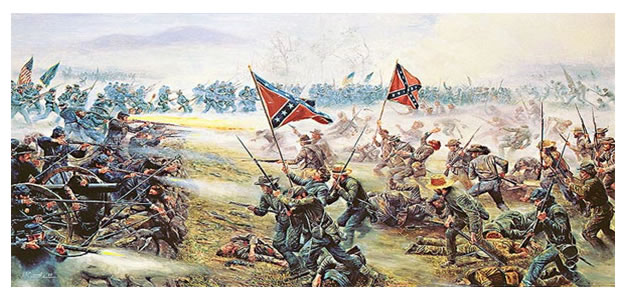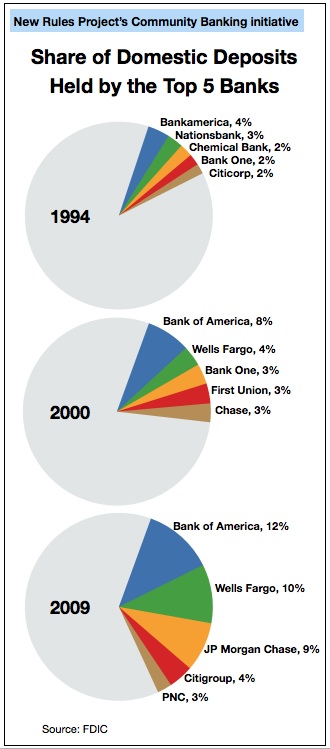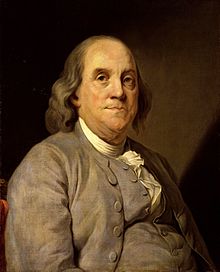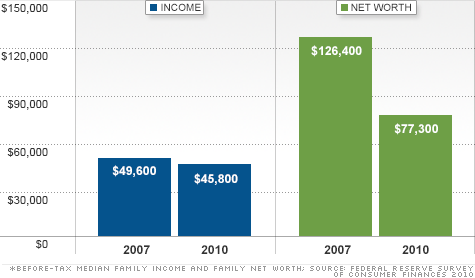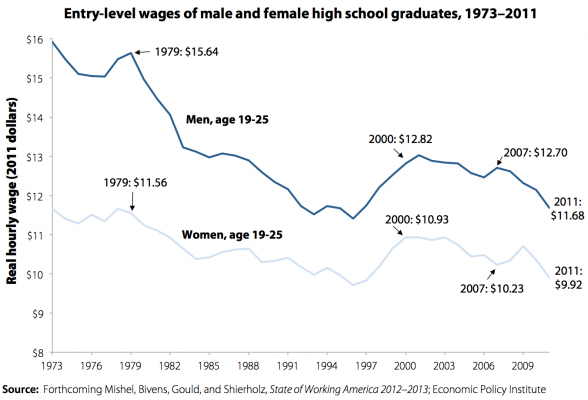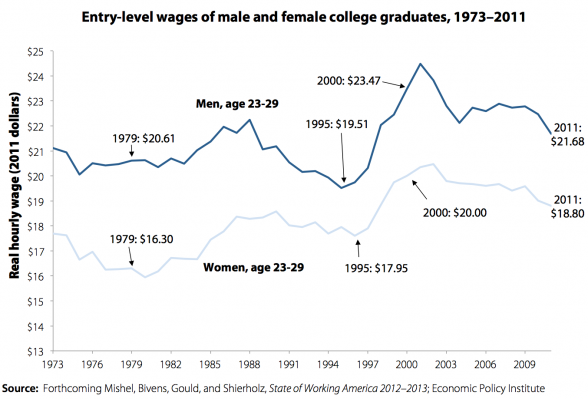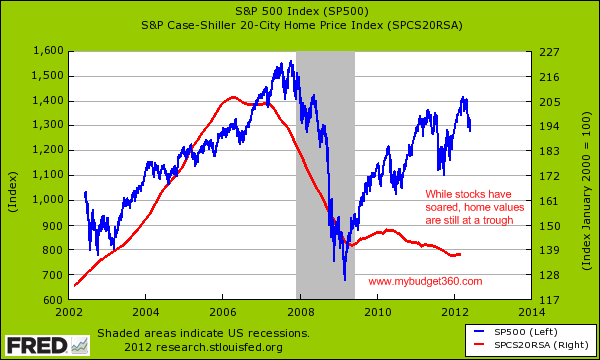Neil puts the 2012 election into a generational perspective. If you are looking for Neil to pick a winner, read no further. He’s an academic at heart and never tells you what he thinks will happen. But, he supplies plenty of data for you to make up your mind. Based on his breakdown of voters by generation it seems that the Millenials will decide this election. They are still strongly in Obama’s camp, but their enthusiasm for Obama has waned. If they don’t vote in significant numbers or if Romney can split the young white vote, the election would go to Romney. The old farts are strongly in Romney’s corner. GenX is split down the middle. The yuuts will decide this election.
Pundits have long been predicting that the presidential election will be much closer and much meaner in 2012 than it was in 2008. Closer it now is. According to the RCP Poll Average, the race is now a virtual tie: Incumbent Obama now leads by a mere 1.8 percent over Romney, whereas challenger Obama led McCain by 7.6 percent exactly four years ago. It will certainly revolve around a very different array of issues—much less argument about the war on terror and GOP performance, and a lot more about the stagnating economy and Democratic performance.
In one respect, however, the next election will be a replay of the last: There will be a historically large divide in the preferences of younger voters (under 30) versus older voters (65+). In 2008, this divide (21 percentage points) was wider than in any election since the advent of age-bracketed voting data in the 1960s. The second-biggest divide (16 percentage points) was back in 1972, when nearly half of all young voters voted for McGovern while older voters went overwhelmingly for Nixon.

I’ve been tracking generational leanings in the polls pretty carefully. The Pew Research Center has issued several reports (most notably, The Generation Gap and the 2012 Election) exploring this divide, and Time followed up with its own cover story (“The New Generation Gap”). More recently, Mike and Morley, Forbes, The New York Times, and many others have also weighed in.
Bottom line: Every generation is today a bit more favorable toward Obama than they were in 2010 and a good deal less favorable than in 2008. The partisan gap between the Democrat-leaning young and the Republican-leaning old, however, remains as strong as ever—at around 20 percent.
Back in 2008, the big story was how and why today’s rising Millennial Generation voted by a large and decisive margin for the Democrats. This fall, the media focus may shift. The big story could be how and why today’s angry, aging Silent Generation put the Republicans over the top. The relevant parallel here is 1972, when Nixon was able to split the young Boomer vote with McGovern—and then crush McGovern with all voters over age 30. (Nixon’s popular margin in 1972, 23.2 percent of the electorate, is the fourth largest in U.S. history.) Romney, of course, cannot hope for Nixon’s margin. But the basic logic still stands. Romney doesn’t have to win the youth vote; he just has to contain youth losses enough so that his huge advantage among older voters puts him ahead.
The 2012 election will hinge on the collective choices of five generations of voters, each with a different collective life story shaped by its own location in history. Let’s take a look at how each of these stories is likely to determine the outcome. (Throughout, I will borrow shamelessly from Pew’s wonderful cohort-tracking research and graphics.)
Because this piece turned out to be pretty long, I’m going to break it into two posts. This post will look at the generations themselves. The next will look beyond generations to the election outcome.
At the very elder edge of the electorate is the G.I. GENERATION, born between 1901-24. (Sample leaders: John Kennedy, LBJ, Richard Nixon, Jimmy Carter, Ronald Reagan, George Bush, Sr.) With its youngest members now age 87 and older, the G.I.s today comprise just 2 percent of likely voters. Except during the late 1960s and 1970s, this “greatest generation” has always heavily favored the Democrats, having come of age as huge supporters of the “big government” presidency of FDR. Indeed, in every election from 1994 to 2004, the peers of Jimmy Stewart were more likely than younger Americans to vote Democratic. [See the “Roosevelt” chart on this page from the Pew study.] Even in 2008, according to Gallup, Obama ran almost even with McCain among these overwhelmingly white 80+ voters—better than he did with any other age bracket over 40. Apparently, generation trumps age when it comes to racial bias. Prediction for G.I.s in 2012: slight edge (3 percent) to the Democrats.
Now let’s turn to the “young old.” Dominating the ranks of retirees is the SILENT GENERATION (born 1925-42, today age 69 to 86), comprising 13 percent of likely voters. (Sample leaders: Robert & Ted Kennedy, Martin Luther King, Jr., Walter Mondale, Michael Dukakis, Gary Hart, John McCain.) Coming of age during the Truman, Eisenhower, and Kennedy presidencies, when Americans generally were voting Republican, the young, conformist Silent leaned more Republican than the rest. While the Silent produced nearly all of the most famous civil-rights leaders and “good government” reformers of the post-war era, they have never favored a strong executive (no Silent has ever been elected President) and have tended to return to their GOP roots as they have grown older. In seven of the last nine elections, they have voted more heavily than other Americans for Republicans. [See the “Truman” and “Eisenhower” charts on this page.]
Since 2008, the Silent’s pro-GOP tendency has widened considerably, along with their unhappiness with the direction of the country. Polls show the Silent are upset not just because they are “angry” at government (they are twice as likely as Millennials to say this), but also because they are “uncomfortable” with positions they associate with younger Obama Democrats on issues such as immigration, marriage, homosexuality, religion, and the Internet. The Silent are the least-immigrant generation (per capita) in American history, and they grew up at a time when the rules of life were clear and simple. Today they are disoriented by the bewildering diversity of today’s younger generations, and they can’t figure out what the new rules are.
Most Silent recognize that are doing well economically compared to younger Americans. But they worry that America is losing its sense of exceptional “greatness” and gaining an addiction to endless public debt—faults they attribute more to Democrats than to Republicans. Many fear the nation is headed back toward the Hard Times they witnessed in their childhood. According to recent Gallup surveys, the Silent favor Romney by 14 percentage points. Prediction for the Silent in 2012: large margin (15 percent) to the Republicans.
Occupying midlife and already surging past age 65 is the BOOM GENERATION (born 1943-60, today age 51 to 68), today comprising 31 percent of likely voters. (Sample leaders: Bill & Hillary Clinton, George W. Bush, Al Gore, Newt Gingrich, Mitt Romney, Condoleeza Rice.) Boomers came of age during the social and cultural upheavals that rocked America during the late ‘60s and ‘70s—giving them a fixation on vision and values that defines them even to this day as a generation of individualists and culture warriors (left versus right, “blue” versus “red”). As they grow older, Boomers increasingly call themselves “conservative,” but not necessarily Republican.
First-wave Boomers (today in their 60s) have more years of education than younger Boomers, have done better economically, vote more reliably, gravitate to humanist or mainstream churches, and vote more for Democrats. Last-wave Boomers (today in their 50s) experienced a rapid fall in SAT scores and college attendance, lag far behind first-wavers economically, vote less often, veer toward atheism or “born-again” evangelicalism, and vote more for Republicans. In recent elections, first-wave Boomers have tilted to the Democrats; their younger brothers and sisters have favored the GOP. [See the “Kennedy/Johnson,” “Nixon,” and “Ford/Carter” charts on this page.] In recent months, Gallup shows Boomers favoring Romney by about 5 percentage points. Prediction for the Boomers in 2012: medium edge (5 percent) to the Republicans, with red-leaning last-wavers slightly overpowering blue-leaning first-wavers.
Today’s emerging leaders and the parents of most school-age kids belong to GENERATION X (born 1961-81, today age 30 to 50). Gen Xers now comprise 35 percent of likely voters, a slightly larger share than Boomers. Gen X’s share should be much larger, but their tendency to vote less often than older generations dilutes the impact of their raw numbers. (Sample leaders: Barack Obama, Sarah Palin, Chris Christie, Kirsten Gillibrand, Marco Rubio, Bobby Jindal.) The left-alone children of the Consciousness Revolution who later came of age during an era that stressed free agency, personal ownership, and survivalism, Gen Xers have mixed feelings about the two parties. Xers like the social and cultural liberalism of Democrats (whatever “works for me” is perfect), but they also like the economic conservatism of the GOP (hey, don’t even think about picking my pocket!).
Like Boomers, they show a strong political trend from oldest to youngest, but it’s in the opposite direction. First-wave Xers, born in the early 1960s, first voted during the early Reagan years and have thereafter leaned heavily to the GOP. (Just over 70 percent of today’s state governors and members of Congress born from 1961 to 1965 are Republican—the biggest partisan tilt of any five-year cohort group.) Late-wave Xers came of age with Clinton and now lean more toward the Democratic Party. [See the “Reagan/Bush” and “Clinton” charts on this page.] According to recent Gallup polls, Generation X favors Obama by 1 percentage point. Prediction for Gen Xers in 2012: dead even, with GOP-leaning first-wavers exactly neutralizing Democratic-leaning last-wavers.
Finally comes the youngest generation of voters, the adult members of the MILLENNIAL GENERATION (born 1982-93, today age 18 to 29), comprising 18 percent of likely voters. (As yet, they have no national political leaders.) Twenty years ago, they were the special and fussed-over “Friends of Barney.” Today, they’re telling older Americans to share their toys and put a smile on their face. For Millennials, the team comes first: They are more likely than older voters to favor strong communities, urge consensus solutions, trust “big government,” and shrug at paranoia over privacy. With their trademark confidence, Millennials embrace many of the social trends (related to race, ethnicity, religion, homosexuality, and the Internet) that older voters find threatening. Millennials are the least likely to believe such trends undermine patriotism or family cohesion. They are the most likely to be optimistic about America’s long-term future.
This outlook puts Millennials decisively in the Democratic camp, with roughly two-thirds of them (66 to 32 percent) voting for Obama over McCain in 2008 and (according to Gallup) a smaller yet still impressive margin of three-fifths of them favoring Obama over Romney today. [See the “Bush/Obama” chart on this page.] The big question is whether the waning enthusiasm Millennials now show in re-electing Obama—combined with the extra fervor Silent and Boomers show in defeating him—will allow the GOP to prevail. Nonwhite Millennials are as overwhelmingly pro-Obama in 2012 as they were in 2008 (roughly a 60 percentage point margin). Yet Democrats should worry about the recent Pew finding that, among white Millennials, the 10 percentage point margin for Obama in 2008 has been fading away and nearly disappearing over the past year. If young whites split anywhere close to 50-50 in 2012 (remember, non-Latino whites still comprise 60 percent of this generation), then it hardly matters what young minorities do: The GOP will possess an almost insuperable advantage. Prediction for Millennials in 2012: very large margin (20 percent) to the Democrats, led by a 4-to-1 advantage among young minorities.
It’s always great to have the young on your side. After all, youth represent the future. In the decades to come, if the Millennials stay their political course, they would confer a huge advantage to the Democratic Party. But in the next election, they are still outnumbered by two larger generations of voters (Gen X and Boom), and they may well be outworked by a more energized generation of seniors (the Silent). The young can sometimes lose elections, and lose them badly. It happened in 1972, when the Boomer youth who voted for McGovern were overwhelmed by all the midlife and senior voters (the G.I. and Lost Generations) who favored Nixon.
Two years later, of course, Nixon resigned. The age gap closed almost entirely by the next election and pretty much stayed closed all the way until 2008. As if to close the circle, many of the Millennials who now favor Obama are children of the same young “peacenik” Democrats who once voted for McGovern. That’s what makes elections so fascinating—their power to surprise and to reveal, both who are today and who we will become tomorrow.
If you do all the arithmetic with the voter shares and margin predictions cited above, you will find that my overall prediction is for a dead-even tie between Obama and Romney. Meaning: The 2012 winner is going to have to put together a generational scorecard that is, in some combination, better than the figures I have revealed.
How likely is it that Obama or Romney will put together that scorecard? I look at that in the next post.
PART 2
This happens often. After I write about generational drivers or changes in the social mood, readers will contact me and ask: OK, so much for the drivers and the theory, Neil—what do you think will actually happen?
So let me try to pre-empt those readers. In my last post, I talked about how and why different generations lean toward or against the 2012 presidential candidates. In this post, I’ll talk about the connection between generations and some of the more conventional ways pundits currently handicap the election. I won’t exactly say who I think will win, but I will discuss some of the indicators I am following closely.
Futures Markets. Everyone knows that Republicans believe in futures markets (and in weird options and derivatives based thereon, like CDFs) more than anyone else. So here’s the bad news they have to swallow: Futures markets are now predicting Obama to beat Romney by roughly 16 percentage points. (This is not the predicted voter margin in the election; it is the probability margin by which of most investors think Obama will sneak by in at least a razor-thin victory.) That’s 57-40 percent on Intrade or 58-42 on Iowa Futures. Obama has been leading in these markets since last fall. Bless those markets. Because of the “law of one price” (look this one up under “arbitrage”), all of these futures market prices have to match, worldwide. Even brainy liberals (see Infotopia by Cass Sunstein, ) give very high praise to futures markets.
I agree that futures markets have a great track record and need to be taken seriously. Why do they lean more pro-Obama than the weekly polls? Maybe they sense that the sentiment for Romney is merely the way Americans vent their anger (always at the incumbent when talking to pollsters) before settling down and voting for the incumbent after all. Or maybe they sense that the strong preference of the rising generation for a cool and pragmatic Gen Xer as POTUS really does represent where the nation is heading—and that most voters will wake to that fact come November 6. Young Pompey once declared (to aging Sulla) that “more people worship the rising than the setting sun.” Maybe the markets agree.
Then again, markets no less than polls can be greatly mistaken this far away from the election. At the very least, I think that buying a Romney contract on Intrade at $4.00 and waiting to sell it once it hits $4.50 is an extremely safe trade—since sooner or later Romney is bound to have a surge carrying him at least this far. Even John McCain in 2008 surged in early September to 0.47 in the futures markets. It is also possible that the markets could gradually drift to a sizable Romney advantage between now and mid-October, and that after Romney wins everyone will congratulate the markets for being so prescient.
The Economy. According to the Pew Research Center, Romney leads Obama in his handling of one big issue, the economy, no matter how you phrase the question. And the economy—for example, the creation of jobs and the revival of wage growth—is now far more important to voters than any other issue (environment, gay marriage, immigration, foreign policy, what have you) by a very large margin. This is a big advantage for Romney. The unemployment rate is now 8.2 percent; looking at current indicators, it may not decline at all between now and November. No President since FDR has won an election with an unemployment rate over 7.2 percent. (That was the rate in November of 1984, when Reagan won re-election; and unlike Obama, Reagan brought the rate down from the date of his first election.) See The New York Times’ FiveThirtyEight column for a detailed update on the link between the economy and election outcomes.
The economy is as good an argument for Romney as the futures markets are for Obama. Still, it has potential weaknesses. Voters have yet to buy into Romney’s economic program—or even to understand it—in any big way. Is Romney going to cut deficits faster than Obama? Who knows? However he runs deficits, Romney says he wants to do it more through tax cuts than spending increases. Is John Q. Public OK with this? Also, keep in mind the “no President since FDR” proviso. If the public comes to equate George W. Bush with Hoover—and Obama with FDR—well then all bets are off. FDR won as an incumbent in 1936 with an unemployment rate of 16.9% and in 1940 with a rate of 14.6%.
I agree that if the economy worsens in the next couple of months, or if we simply learn more about how bad the economy now is (at least one eminent forecasting group thinks we’re already in a recession, it just hasn’t been called yet), the news will certainly give a further boost to Romney. But the link between each generation’s pocketbook and vote is seldom simple or direct. The Silent Generation has done the best economically in recent years and will never bear much of the burden of large deficits, yet the Silent are the most anti-Obama. For the Millennials, it’s the other way around. Liberals often complain that red-zone Americans would switch parties if they only understood their own economic self-interest. Conservatives say the same today about Americans under age 30. The problem is, most people don’t respond to piecemeal economic incentives. They either do, or do not, buy into a whole vision.
Likeability. How much do you like the candidate? How much would you like to have a beer with him? These are the sorts of warm-and-fuzzy questions that many political analysts believe turn the tide in an election. In most of the critical elections I can remember, GOP candidates have had the likeability advantage: Reagan over Carter; Bush Sr. over Dukakis; Bush Jr. over Kerry. But this election, it’s tipping the other way: The Democratic candidate in 2012 is currently much more likeable than the GOP candidate. It hardly matters what you ask—which candidate is more “friendly,” “connecting,” “honest,” “good,” “trying,” or “engaged,”—Obama comes out ahead, typically by double digits. Likeability could be a huge plus in an era of great anxiety when many voters will want to go with their “gut. It certainly worked for FDR.
Speaking of whom, there actually was a time when the least likeable candidate was, routinely, the Republican. And that was the 1930s and 1940s. Herbert Hoover and Alf Landon were less likable than FDR, and Tom Dewey was less likeable than just about anyone, including FDR and Harry Truman. So Democrats, yes, can be likeable. Are we reverting to the last Fourth Turning in party likeability? Or is there a simpler explanation? Perhaps Mitt Romney, whom nearly everyone who knows him would call him very “likeable,” has simply not yet had the chance to get his charm on in prime time. We’ll see.
Intangibles & Wildcards. I give most of the intangibles at this point to Romney. He is the challenger, and it is an old maxim (though some disagree) that challengers do better late in the campaign. A much larger share of his supporters say they are “enthusiastic” about this election—no doubt reflecting the higher relative energy of older voters this time around. He also remains relatively unknown, which means that millions of Americans will be taking a close look at him for the first time in the ten weeks between the GOP convention and the election. Since much of what is known about Romney thus far is negative (thanks to the attacks from his primary opponents and to the Obama campaign’s efforts to “predefine” him), it is likely that his strengths—for example, his intelligence, wit, and dedication to his family and the community—will get plenty of play. Romney may surprise voters during the debates by coming across smarter and warmer than most voters are expecting.
Another possible plus for Romney is the “reverse coattails effect.” Since the GOP are odds-on favorites to retain a majority in the House and gain a majority in the Senate, Romney could be pulled along by state and local candidates. That assumes of course that most voters prefer to vote a straight ticket and have a single-party government. It’s often said that Americans are happy with divided government, but according to one recent study a large (and possibly rising) majority say no, they really do want one party in charge.
Any intangibles for Obama? Confidence, maybe. Though Obama supporters are less enthusiastic, they are more likely to say they want to cast a positive vote for their candidate (as opposed to voting against the other guy) and are a lot more confident than Romney supporters that their candidate will win. Obama must hope that confidence doesn’t morph into complacency and that his supporters are still ready to sprint. Many pundits also say that Obama has an advantage in the electoral college by leading in the bigger states. That could make a difference, but only if the popular vote is extremely close.
As for wildcards—meaning sudden big surprises—these usually break for the incumbent Commander in Chief, unless voters associate them with mistakes made by the incumbent. An attack on Iran (by Israel and/or the United States, though the most likely date now mentioned in the media is October, after the election), would likely break favorably for Obama. Seismic financial news (like a crash triggered by an impending breakup of the Euro) may not break as well, since it may persuade many voters that the world needs better global economic leadership.
Obama and Romney. Let me conclude with a few thoughts on the two candidates themselves—and how they are, or are not, representative of their generation.
As readers of our books and this blog know, I consider Obama (born, 1961) to be a first-cohort member of Generation X (born 1961-81). The Gen-X dates we’ve explained and defended at length elsewhere (too many books to hyperlink!). But what about Obama? Does he fit the basic Xer picture? I’ve always thought so: Son of a new-age mom; child of a broken family; growing up disoriented amid incessant travel, change, and social experimentation; coming of age agoraphobic, feeling (as he puts it) “like an outsider”; and ultimately constructing his own persona (like Gatsby), a quality I see in many successful Xers. What’s more, Obama knows he’s not a Boomer: In his books (Dreams from My Father, The Audacity of Hope), he repeatedly mentions how he feels he came along “after” the Boomers and wants to put an end to much that Boomers have done wrong (culture wars, ideological polarization, and so on). Back in 2008, Obama often referred to this as a contrast between an earlier “Moses” generation and his own “Joshua” generation.
Obviously, opinions differ about who Obama “really” is. I think he is at heart a canny survivor, a masterful tactician, a pragmatist who doesn’t let emotions cloud his judgment. He knows when to play rope-a-dope (always let the GOP make the first budget move, then counter), or when to rouse his base by inveighing against Wall Street tycoons (even while hiring them to staff his Treasury), or when to ignore his own base and make a shrewd cost-benefit call (War on Terror by Predators, anyone?). On the Boomer cusp, Obama is certainly capable of crusading oratory—which adds to his versatility. Many of the most memorable crisis-era leaders in American history have been, like Obama, Nomad-Prophet hybrids: FDR, Abraham Lincoln, Sam Adams. Yet clearly Obama would need a very different and far more effective second term—and another opportunity handed to him by history—to enter these ranks.
As for Mitt Romney (born 1947), no one doubts he is a Boomer. He’s led a committed religious life; he’s always won accolades as a driven achiever; he’s made tons of money as a blue-chip yuppie; he believes in Values and Culture and Principles; and he tends to see America’s future in heavily moralistic terms (for example, in his recent book, No Apology: Believe in America, he juxtaposes his father’s “Greatest Generation” against his own “Worst Generation”—a dark figure of speech that Obama would never use). Will his religion be a problem? There is lots more talk about Mormonism as a Christian heresy among older than among younger Americans, that’s for certain. Many Millennials are impressed by the strong community ethic of Romney’s LDS Church.
One mystery about Romney, though, is the impression he gives to many of his fellow Boomers that he never shared their passionate coming-of-age experience, never broke from Mom and Dad, and never drank from the same deep well of authenticity and inner fire. We used to call this the “Dan Quayle problem.” Boomers have never been drawn to someone who seems to paint by the numbers. In the GOP primaries, when running against Gingrich and Santorum, Romney consistently did worse among Boomers than among other generations.
Yet in the general election, this weakness may rebound to his advantage. In the GOP primary, Mitt Romney consistently did better with young voters than any of the other candidates (with the occasional exception of Ron Paul). Millennials may actually like Romney’s cool and precise 7-point memo responses. (Romney, far more than McCain, will be able to debate Obama this fall on his own Ivy-League level.) Silent voters, similarly, may also prefer the buttoned-down Romney over the totally unplugged Boomer radical.
Yet at some point, for all of his advantages on paper, Romney will have to show some flame, some focus, and some real killer instinct. He will have to get ahead, stay ahead, and systematically thwart his opponent’s comebacks. In a national election, Romney has not yet demonstrated he has that endurance and resolve. Obama has.
